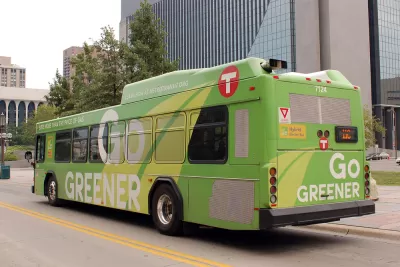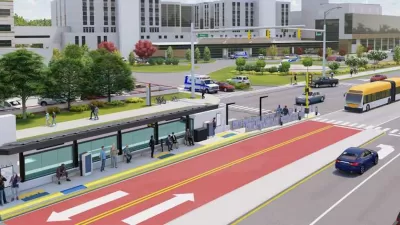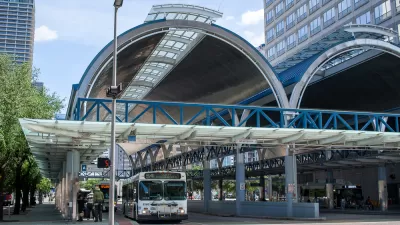The city wants to become North America’s ‘bus rapid transit capital.’

With the opening of its fifth bus rapid transit (BRT) line, Minneapolis is on its way to achieving its goal of becoming “the bus rapid transit capital of North America,” reports Jared Brey in Governing. “In all, the project includes 61 new bus shelters, 78 crosswalk restripings, 24 traffic signal upgrades and 246 electric heaters, which can be turned on by passengers at the press of a button.”
Unlike regular bus service, Metro’s BRT lines only stop at dedicated bus platforms every quarter- to half-mile. Riders pay their fares, before boarding, at well-lit stations with electric heaters and digital signs showing schedules and real-time arrival information. The buses are scheduled to come every 10-15 minutes.
Faster and more reliable than regular buses and cheaper to build than rail, bus rapid transit has seen ridership recover faster than other modes in Minneapolis after losing riders to the pandemic. According to Katie Roth, the director of arterial bus rapid transit at Metro Transit, introducing BRT boosted ridership on the system overall: “other bus lines in the Metro system saw 30 percent increases in ridership when they were switched to BRT, Roth says.”
Metro Transit has six more BRT lines in the works.
FULL STORY: Minneapolis Wants to Be the ‘Bus Rapid Transit Capital of North America’

Alabama: Trump Terminates Settlements for Black Communities Harmed By Raw Sewage
Trump deemed the landmark civil rights agreement “illegal DEI and environmental justice policy.”

Planetizen Federal Action Tracker
A weekly monitor of how Trump’s orders and actions are impacting planners and planning in America.

Why Should We Subsidize Public Transportation?
Many public transit agencies face financial stress due to rising costs, declining fare revenue, and declining subsidies. Transit advocates must provide a strong business case for increasing public transit funding.

Understanding Road Diets
An explainer from Momentum highlights the advantages of reducing vehicle lanes in favor of more bike, transit, and pedestrian infrastructure.

New California Law Regulates Warehouse Pollution
A new law tightens building and emissions regulations for large distribution warehouses to mitigate air pollution and traffic in surrounding communities.

Phoenix Announces Opening Date for Light Rail Extension
The South Central extension will connect South Phoenix to downtown and other major hubs starting on June 7.
Urban Design for Planners 1: Software Tools
This six-course series explores essential urban design concepts using open source software and equips planners with the tools they need to participate fully in the urban design process.
Planning for Universal Design
Learn the tools for implementing Universal Design in planning regulations.
Caltrans
Smith Gee Studio
Institute for Housing and Urban Development Studies (IHS)
City of Grandview
Harvard GSD Executive Education
Toledo-Lucas County Plan Commissions
Salt Lake City
NYU Wagner Graduate School of Public Service





























